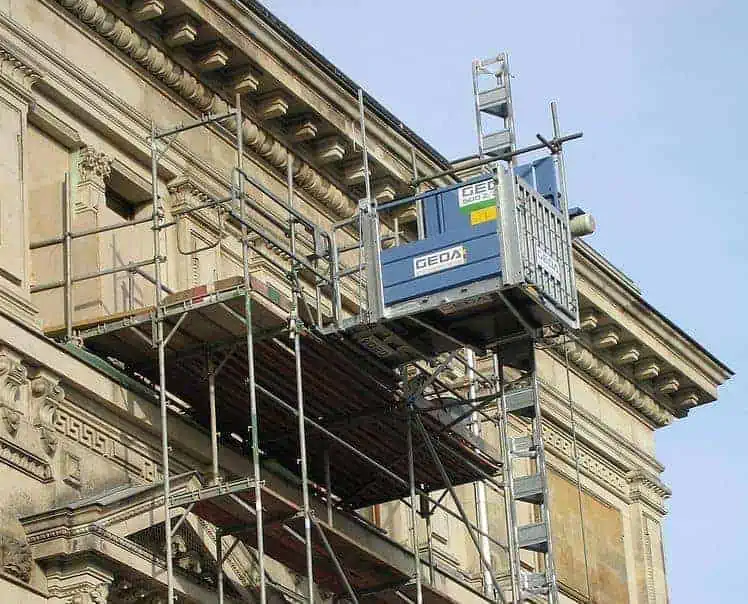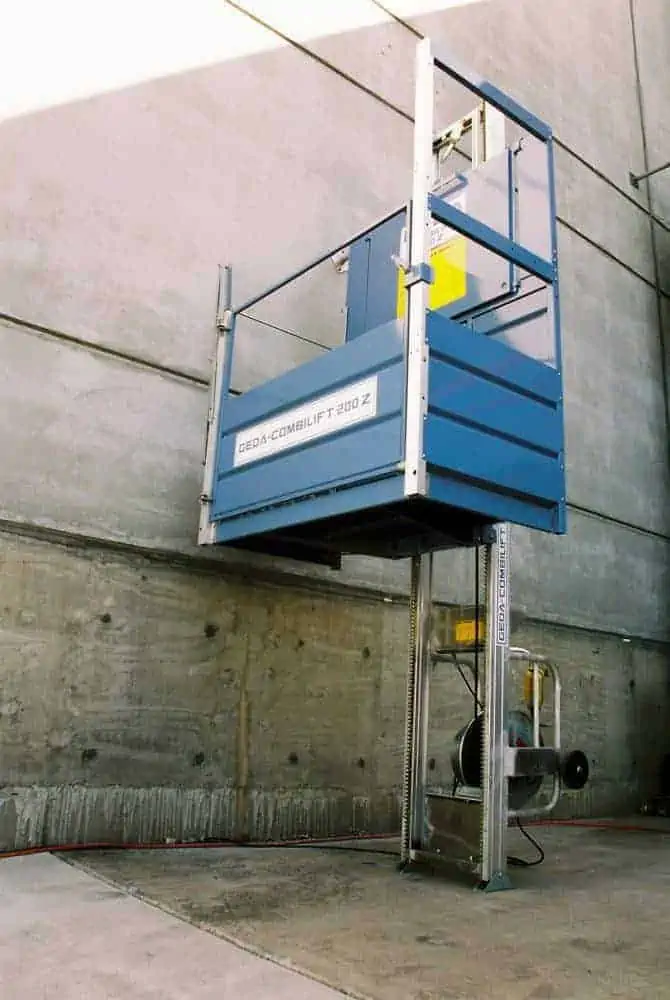Do you have experience lifting and transporting big objects from one construction site level to another? You must know how time-consuming and unpleasant this procedure can be. The use of a material hoist, however, may drastically simplify and speed up the process. Businesses might invest in hoists, which haul large objects vertically to save time and effort. However, consider a few factors before settling on a hoist for your building site.

Load Capacity:
Choosing the correct hoist requires careful consideration of its load capability. It’s the heaviest load the hoist can raise and carry without causing damage. Selecting a suitable weight capacity hoist is essential to protect personnel and materials. When considering load capacity, it is necessary to remember the following:
It is essential to consider the weight of the goods being lifted and carried and any attachments to the hoist while deciding on the appropriate load capacity. To ensure the hoist can handle any weights, predicted or otherwise, it’s necessary to consider the type and the maximum weight of the hoist.
- The needed capacity of a hoist is very context-dependent.
- A construction site could need a hoist with a lifting capability of up to ten thousand pounds to move massive steel beams and concrete slabs.
- However, a warehouse may just need a hoist with a 2,000-pound capability to carry things like boxes and pallets.
- Overloading a hoist might cause severe injury or death.
- Consequently, the hoist may fail, resulting in lost loads and worker injury.
- Damage to the hoist itself might lead to expensive maintenance or perhaps replacement.
- It is crucial never to exceed the hoist’s weight capability and to provide enough training to all employees using it.
Height of Lifting:
A hoist’s lifting height is an important consideration when purchasing.
“lifting height” describes the highest point at the hoist to raise the weight.
It’s crucial because it influences how much weight the hoist can raise and how far it can transport.
The starting point and final resting spot heights establish the total lifting height needed for your project. The required lifting size is the sum of these two heights plus any necessary height for clearance or safety.
- The maximum lifting height varies depending on the kind of hoist used.
- Depending on the height of the constructed structure, a construction hoist utilized on the site may need to be able to raise objects as high as 100 meters.
- However, the lifting height of a hoist in a warehouse could only be 20 meters.
- Accidents, injuries, and even damage to the hoist or the cargo itself are all possible outcomes of lifting over the hoist’s safe working height.
- Therefore, choosing a hoist with sufficient lifting height is essential for the task at hand.
- To avoid accidents and injuries, ensure the hoist operator has received proper training and strictly adheres to the maximum permissible lifting height.
Speed and efficiency:
The selected hoist heavily influences productivity. Thus it’s crucial to consider the hoist’s speed and efficiency.
The two terms, speed and efficiency, describe different aspects of a hoist’s ability to carry things from one place to another. Both are critical in deciding how well the hoist will serve your requirements. There may be costs and benefits associated with prioritizing speed above efficiency. Moving materials using a quick and efficient hoist may take longer, while a fast and efficient hoist may use more power or other resources to run.
- An efficient hoist, for instance, might be crucial in the construction industry, where every second counts.
- However, an adequate hoist may be more helpful in an industrial context where accuracy and precision are paramount since it allows for the smooth transfer of materials without interfering with sensitive procedures.
- Your actual demands and applications should determine your hoist’s required speed and efficiency.
- Considering these criteria will help you choose the best hoist for your work.
- Increase the efficiency and efficacy of your hoist if you follow these steps.
Safety Features:
Putting safety first is essential when looking for a suitable hoist. Use hoists to safely raise and move large objects from one location to another. That’s why choosing a hoist with all the security measures needed to keep workers safe is so important.
Standard precautions consist of the following:
- Overload protection:
This safety mechanism ensures that the hoist is not movable to move more weight than it can handle. The hoist will promptly cut off if the weight is too great.
- Emergency stop button:
The operator may promptly shut off the hoist thanks to this safety feature.
- Safety interlocks:
These switches restrict the hoist’s upward and downward motion, avoiding damage to the hoist tower at either extreme.
- Security stops:
When the hoist is not in use, or there is a power outage, these brakes engage to keep the cargo in place.
Maintenance and Support:
When shopping for a hoist, it’s essential to consider more than safety considerations. If you keep up with its maintenance, your hoist should endure for years and serve you reliably. In addition, having access to dependable support and maintenance services helps lessen the likelihood of unscheduled hoist repairs and keeps it running smoothly.
Types of maintenance required for hoists include:
- Routine checks:
Inspect the hoist for any signs of damage, wear, or other concerns that might compromise its effectiveness.
- Lubrication:
Lubricate hoists’ moving components regularly to ensure smooth operation.
- Repairs:
It’s crucial to have access to timely and trustworthy repair services if a hoist breaks down.
To ensure the lifetime and dependability of your hoist, it’s crucial to choose one that comes with excellent maintenance and support choices. Keeping the hoist in a superb functioning condition also requires adhering to the manufacturer’s suggested maintenance plan.
Conclusion:
Choosing the correct material hoist may help you save money and time on the job site. Before deciding, it’s essential to consider factors such as material weight, building height, material kind, and available space on the site. Considering these considerations, you can choose a hoist that’s perfect for your demands and speeds up productivity on the job site.




